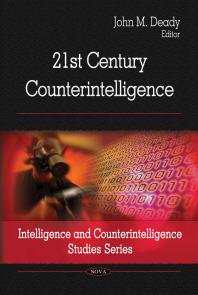(Ebook) 21st Century Counterintelligence by John M. Deady ISBN 9781617281167, 1617281166
The United States faces substantial challenges to its security, freedom, and prosperity. Transnational terrorism, continued proliferation of weapons of mass destruction (WMD), asymmetric warfare, extremist movements, and failed states present severe challenges to a just and stable international order. Our ability to meet these challenges is threatened by the intelligence activities of traditional and non-traditional adversaries. Our adversaries – foreign intelligence services, terrorists, foreign criminal enterprises and cyber intruders – use overt, covert, and clandestine activities to exploit and undermine US national security interests. Counterintelligence is one of several instruments of national power that can thwart such activities, but its effectiveness depends in many respects on coordination with other elements of government and with the private sector. During the Cold War, our nation’s adversaries gained access to vital secrets of the most closely guarded institutions of our national security establishment and penetrated virtually all organizations of the US intelligence and defense communities. The resulting losses produced grave damage to our national security in terms of secrets compromised, intelligence sources degraded, and lives lost, and would have been catastrophic had we been at war. Today we are engaged in a war, fighting terrorists who have invaded our nation’s shores and threaten Americans and our allies around the world. In this struggle – which has cultural, economic, diplomatic, and political as well as military dimensions – the potential consequences of counterintelligence failures can be immediate and devastating, putting in jeopardy our nation’s vital information, infrastructure, military forces and a wide range of US interests, technologies and personnel around the world. In the wake of the attacks of September 11, 2001, the counterintelligence community has begun to evolve from a confederation toward a unified enterprise able to bring the full range of counterintelligence capabilities to bear on national issues. The Counterintelligence Enhancement Act of 2002, as amended, and the Intelligence Reform and Terrorism Prevention Act of 2004 accelerated this evolution and charged the National Counterintelligence Executive (NCIX) with producing this National Counterintelligence Strategy and providing the President with reports on its implementation. Yet much remains undone. Continuing the process of integrating counterintelligence activities is an urgent national requirement. The counterintelligence community must do this through increasingly rigorous policy, doctrine, standards, and technology, and by aligning policy and practice with the budgetary and operational priorities of the Director of National Intelligence (DNI). Counterintelligence activities must be orchestrated and integrated to better protect America’s secrets and vital assets while providing incisive intelligence to national security decision makers. The counterintelligence capabilities of the United States evolved over time to fit the shape and mission of the disparate institutions that controlled them. Taken individually, these capabilities do not provide a response equal to the breadth of the threats arrayed against the nation, and they have not always functioned cohesively in support of focused national priorities.
*Free conversion of into popular formats such as PDF, DOCX, DOC, AZW, EPUB, and MOBI after payment.


